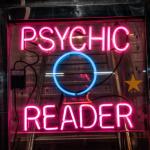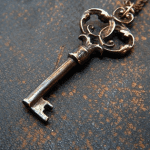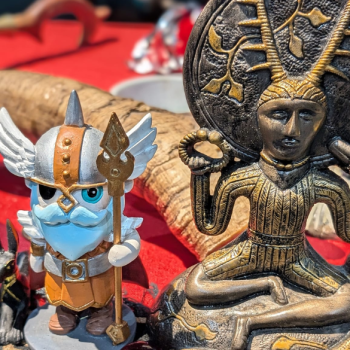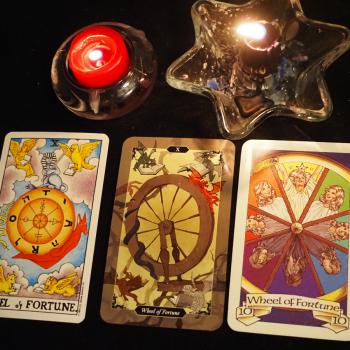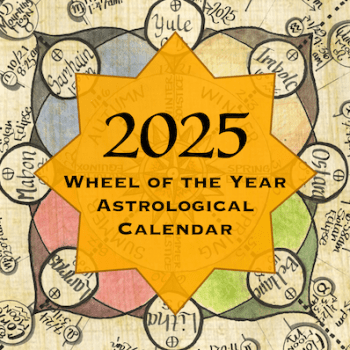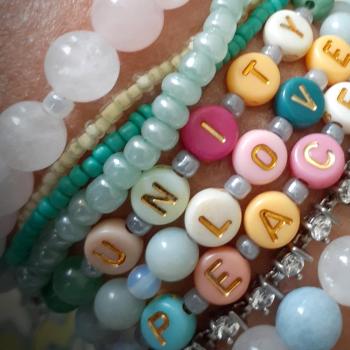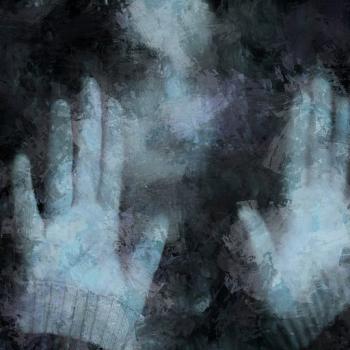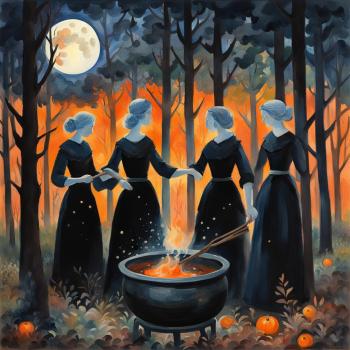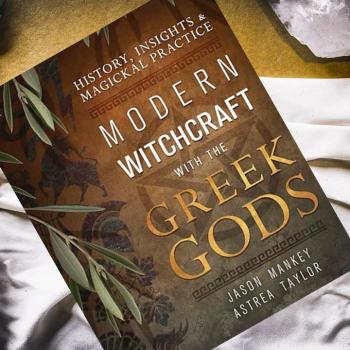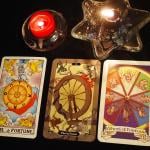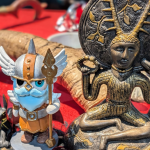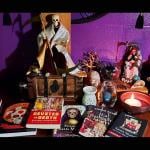There’s been a trend in fairy groups for years of people posting pictures of what they claim are fairies caught on film. Usually these images are nature shots, with the alleged fairy appearing within and formed by the leaves and bark, or sometimes the images are blurry flying objects. People are often quick to jump in and comment that they can see the fairies in the picture occasionally even spotting new ones not seen by the person who took the picture.
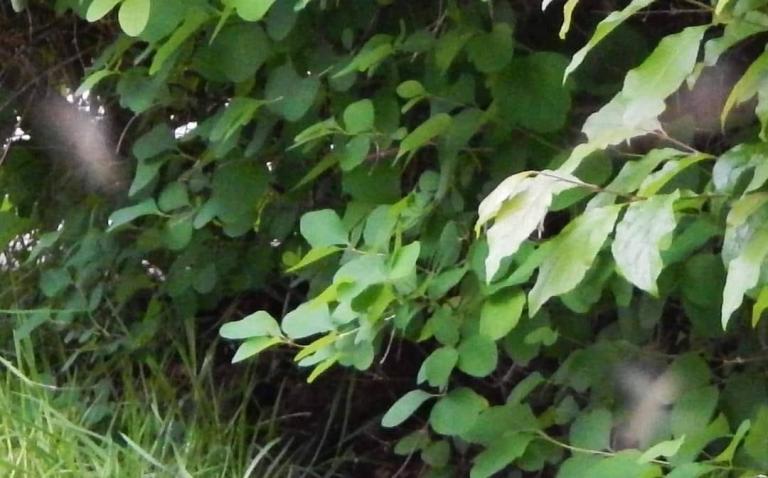
Despite my own profound belief in fairies I am skeptical of these pictures and in my own experience most of them can be easily explained by natural phenomena or known factors and are examples of pareidolia. Discussing this, however, is usually not allowed or frowned on, as it’s seen as discouraging belief or criticizing individual’s experiences. My entire raison d’être is forwarding and encouraging belief in fairies but I think it’s essential to discuss pareidolia in relation to photos of fairies and understand how skepticism of these photos isn’t the same as disbelief in fairies more generally.
What Is Pareidolia?
Let’s start by looking at what pareidolia is and the related phenomena of apophenia. Basically pareidolia is the tendency for the human brain to see familiar shapes in random patterns, including faces, figures, and animals. We’ve all experienced this; for example, if you look at a wooden floor and find a face formed by the swirls and knots in the wood that’s pareidolia. There have also been some very high profile cases of pareidolia, such as when someone appears in a magazine because they have a piece of toast they claim looks like the Virgin Mary. Psychology uses pareidolia via the Rorschach test by having a person interpret a random ink blot and analyzing the result.
The human brain is designed to recognize faces and shapes quickly as a survival mechanism, and as Stephanie Pappas explains in the article ‘Why Its Perfectly Normal to See Jesus in Toast‘: “When people expect to see a face, these expectations may activate a brain region responsible for processing faces.” In other words, if you are looking for faces you are more likely to see faces. Apophenia is a related phenomena where people will see or hear recognizable things in random input; pareidolia is considered a type of apophenia. Apophenia may play a role in ghost hunting via the interpretation of sounds and images.
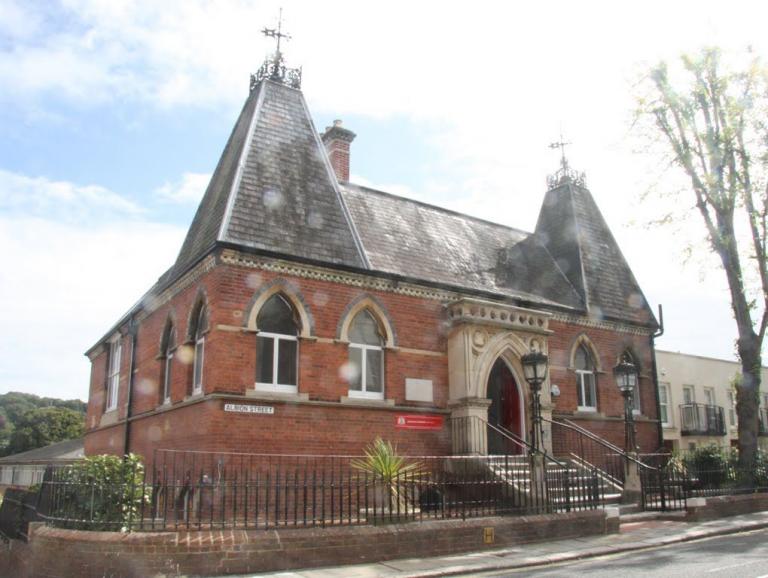
Pareidolia and Fairy Sightings
Pareidolia is a common phenomena among all humans because it’s how the human brain is wired to process patterns. In fairy groups, however, the phenomena isn’t generally acknowledged, is in fact sometimes treated with hostility, although the majority of photographic evidence* of fairies is pretty clearly pareidolia.
As we touched in in the previous section the cause behind this is usually a person who is primed to see fairies in nature because they are intentionally looking for fairies. This also occurs in still photos of things like flying bugs where the image is out of focus on the bug or the insect is highlighted or backlit creating the impression of a glowing amorphous creature with wings and legs. Instead of being understood as a trick of perception these images are put forward as proof of fairies.
Another aspect of this that I think needs to be considered is the way that those who do believe in fairies are expected to also believe that these photos represent fairies caught on film. There’s a kind of group think that happens around this and which strongly rejects those who try to discuss other possible explanations. I find this unfortunate as any and all phenomena should always be open to discussion and explanation. I have said before that in any case of a fairy experience the first thing to be done is apply Occam’s Razor and look for the simplest and most likely explanation – only when that has been ruled out should we consider supernatural explanations as valid. I say this as someone who has a profound belief in these beings and whose spirituality is based on a foundation of that belief.
In folklore and modern anecdotes seeing fairies isn’t about spotting something that looks a bit like a person in the shapes of leaves but is usually about seeing something that is clearly defined, present, and often interactive. I highly recommend reading through the 2017 Fairy Census to get a feel for some of the modern sightings.
We have accounts of fairies in a range of sizes up to 6 feet tall and these beings are clearly seen by the witnesses’ physical eyes. Folklore contains multiple methods to gain the sight of fairies if one doesn’t have it naturally, and many stories warning of the results of offending them by violating their privacy. so seeing fairies is certainly a thing that does happen and still happens to humans, including ones who were not expecting to see or encounter them, but these sightings are very different from what we find in most cases of fairy photos.
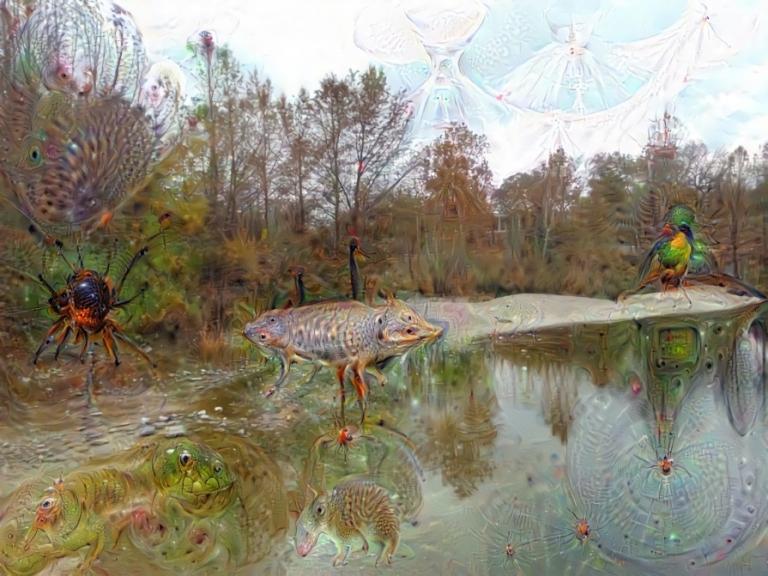
Belief Versus Proof
I think a significant underlying factor going on with this entire subject is the desire by some to prove that fairies are real. And to be honest I find this problematic, and not just because of the folklore that says violating fairy privacy brings serious consequences.
We shouldn’t need to prove that these beings exist in order to believe in them, but should trust our own experiences and the belief we may have from our culture or study of the subject. It is also worth noting – must be noted I think – that many anecdotal and folkloric accounts of fairies describe beings that are between 18 inches and 6 feet tall and are clearly humanoid** in appearance and can be (and are) interacted with and in some cases spoken to, which are vastly at odds with the tiny, fleeting, and often ambiguously shaped creatures captured on film.
I find that any time belief is linked to a need for indisputable physical, technological proof that will sway the hardest of skeptics, the person will always be disappointed. While it may be nice to have such evidence of fairies, or ghosts, or even gods we shouldn’t need it in order to have belief in these beings. In this I think we need to learn a lesson from the Cottingley Fairies Hoax, where a series of faked fairy photographs in 1917 were initially taken as real and then later disproved, causing a crisis of faith for many people who had anchored their belief in fairies to this earthly proof of their existence.
Using Pareidolia
I want to be clear here that pareidolia isn’t a bad thing, necessarily, nor is apophenia. When scrying using water, smoke, clouds, or fire – for example – we are basically using pareidolia to tap into a precognitive ability and interpreting the images we see to get messages or answers. Pareidolia can also be used to interpret omens or engage with psychic phenomena. Just because there is a psychological explanation behind the process doesn’t invalidate the effectiveness of it. I might argue that seeing fairies works differently because we aren’t talking about interpreting a random pattern to get a message but trying to perceive an otherwise invisible being; however, readers may decide differently.
Final Thoughts
In the end, just like the devout Christians who see Jesus in a cheese sandwich, those who truly want to see fairies in random photos will see them. It behooves us as a community, though, I think, to understand pareidolia and to work on weeding out evidence that doesn’t pass the Occam’s Razor test. Fairies are no less real because we aren’t getting photos of them every 5 minutes, and if we toss out all the images that are obviously leaves and bugs what we have left will be evidence with some merit. Because while I will be the first to say 95% to 99% of the pictures I’ve seen have clear earthly or tech explanations the remaining 1 – 5% don’t, and that is very, very interesting indeed.
*there are also issues with gaffs, or basically artwork passed off as genuine fairies or fairy bodies.
**of course some encounters are with fairy beings in animal forms as well


